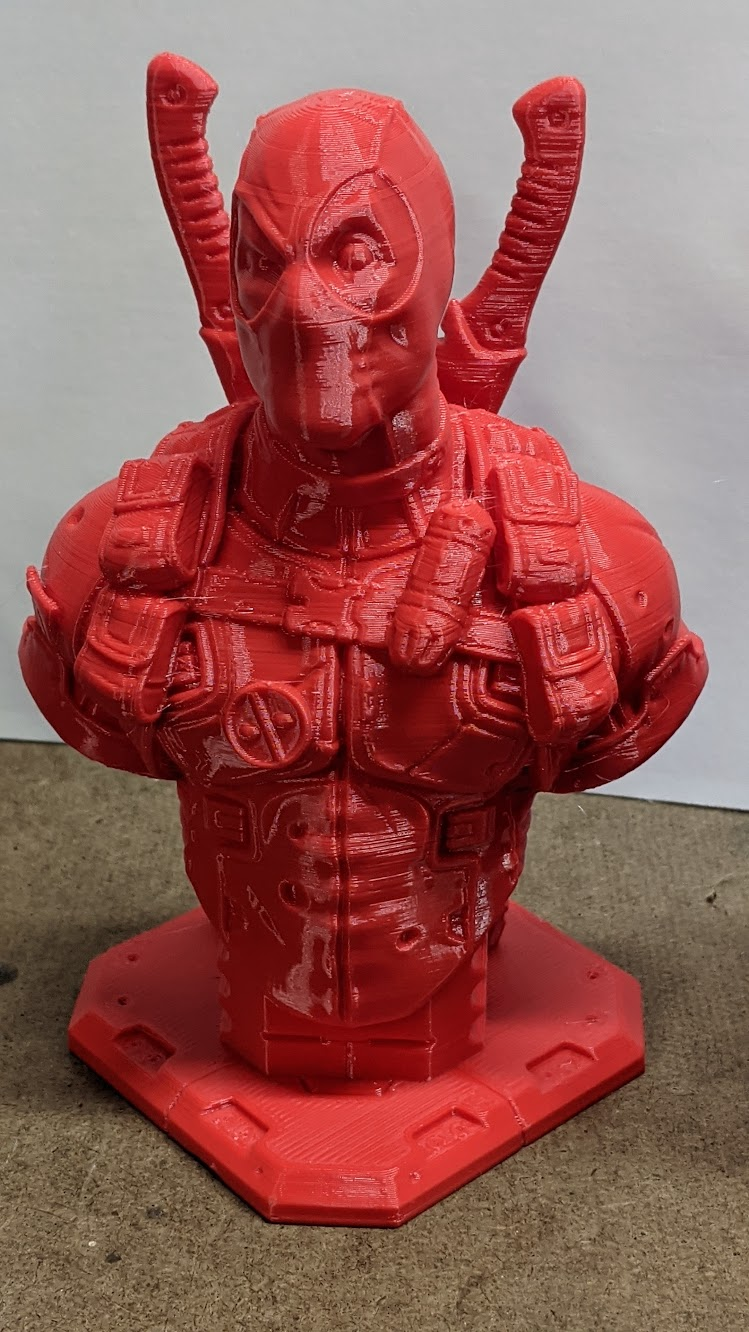I’ve heard (and seem) many a horror story about PETG and was ready for hours of troubleshooting. Generic PETG settings in Prusaslicer and honestly this print couldn’t be much better! There’s a few layer inconsistencies, but those should be pretty trivial to fix after I get a temp tower done.
Printed on an Elegoo Neptune 3 Pro running Klipper using Overture PETG
I think most of the horror stories are from people printing way too fast and too low
Many people print with too small z-offset because “that’s when it sticks”. you can get away with it in pla but petg will just become a messI admit to leveling a little low with PETG on my i3, but not grossly so. I also printed “fast” (for am i3 at least). I still found PETG pretty easy to print, until I got to larger prints and had some warping until I figured out how to deal with that
I’m glad that I experienced PETG and happy I didn’t have to struggle too much. It did give me some troubleshooting tools that I’m putting to use on my 350mm build as I dip a toe into ASA.
No stringing and the layers seem to stick? Magic, I thought these 2 are a XOR
This was my first PETG print It was on an upgraded Ender 3 Pro with Printed Solid Red PETG I just followed some advice online for the settings I did have have a few issue with PETG on my Sidewinder 2 and almost ruined the glass bed

I had horror stories about PETG only with a Vanadium or steel nozzle as it will tend to glob up when the temp is too low.
It did that to me during a print, knocked my PINDA sensor 1mm or so too high, and then leaked everywhere after it made the nozzle crash into the print and come a little bit out of the heat block and creating a gap.
My first PETG print was amazing. One of the best prints I ever did. Then I had 10 failures in a row. I went though 3 half rolls (kept changing them thinking it was cheap filament).
I had a CR-10v2 with the OEM bed springs. I stiffened them by adding a bunch of washers since it’s recommended to upgrade the OEM springs. Suddenly I had mostly good prints. I bought a filament dryer and started printing directly out of that. That solved most of the rest of my problems.
PETG is the “second easiest to print” because it can print below 250 and doesn’t need an enclosure, but that’s only part of the picture. It’s really picky with your first layer height, it doesn’t stick to itself very well with a layer fan on it, and it absorbs moisture (I live in a swamp, I have to print PETG out of a dryer).
I find ASA easier to print than PETG with most prints, with only a few warp-prone shapes where ASA is difficult. I try ASA first and keep more spools in hand than PETG.
I did exactly one print with PETG which was a benchy and it came out great. But I only have roll of PETG and I’m dreading to think what will happen if I try to use it again since it’s been sitting there for 2 years. I did put it in a resealable bag with some desiccant but even so. Most of the time I think I’m better off with PLA, but if I ever have something that will sit in the sun or otherwise get warm, I might go over to PETG for it.



